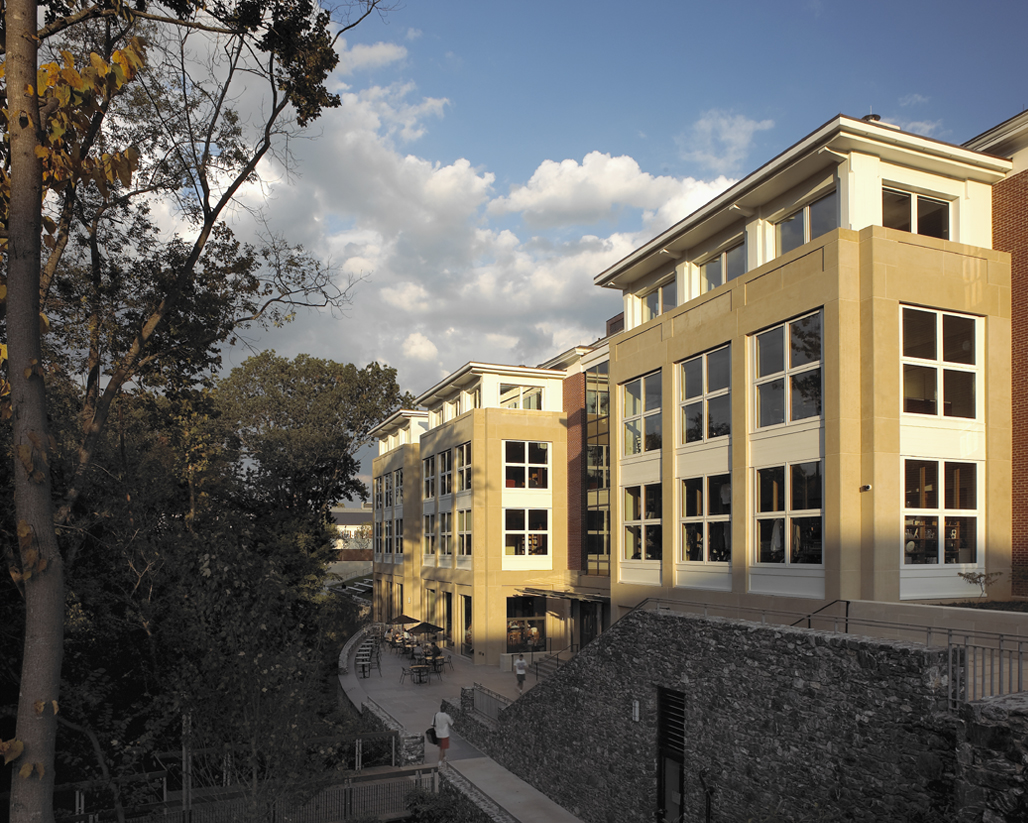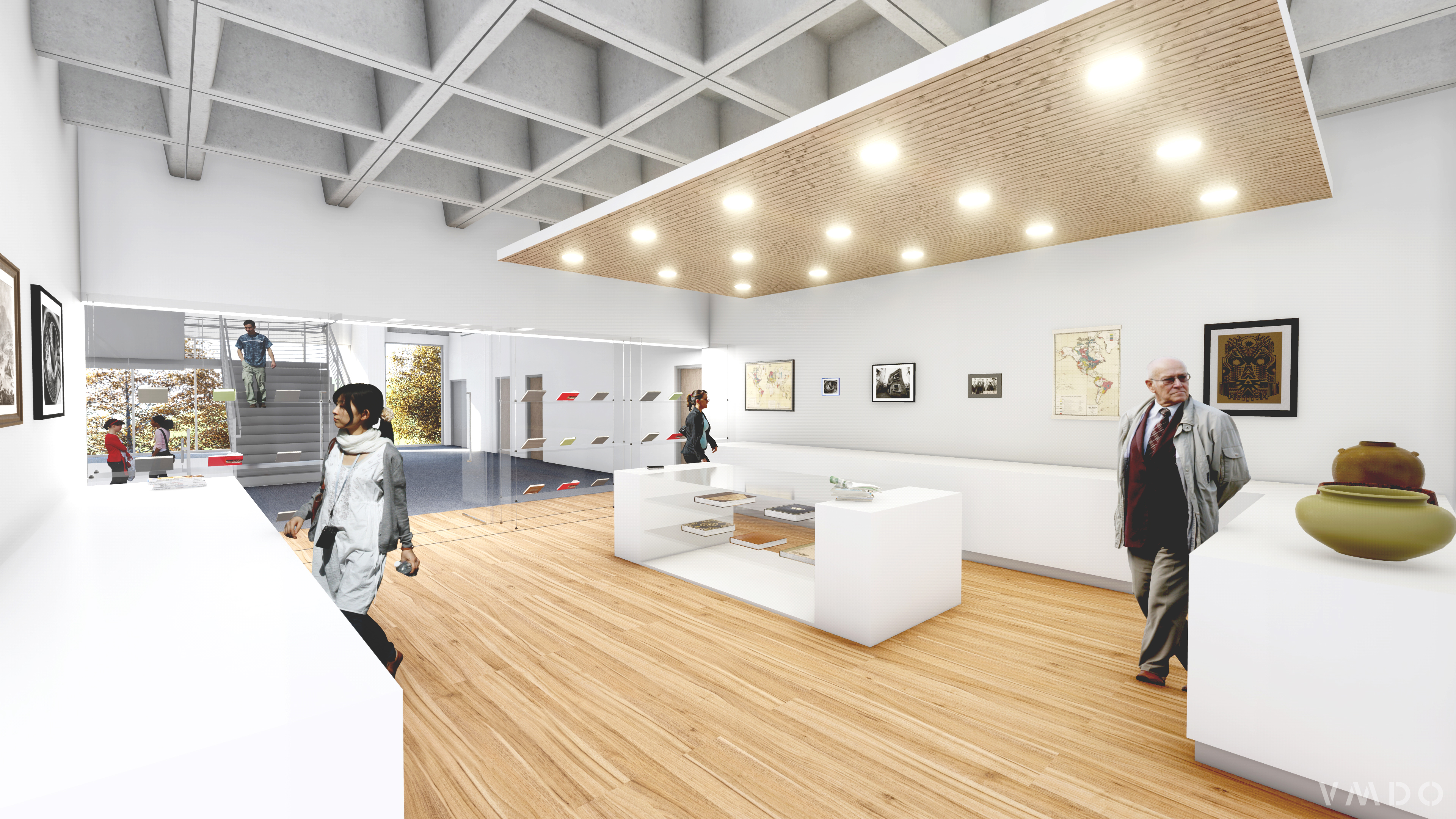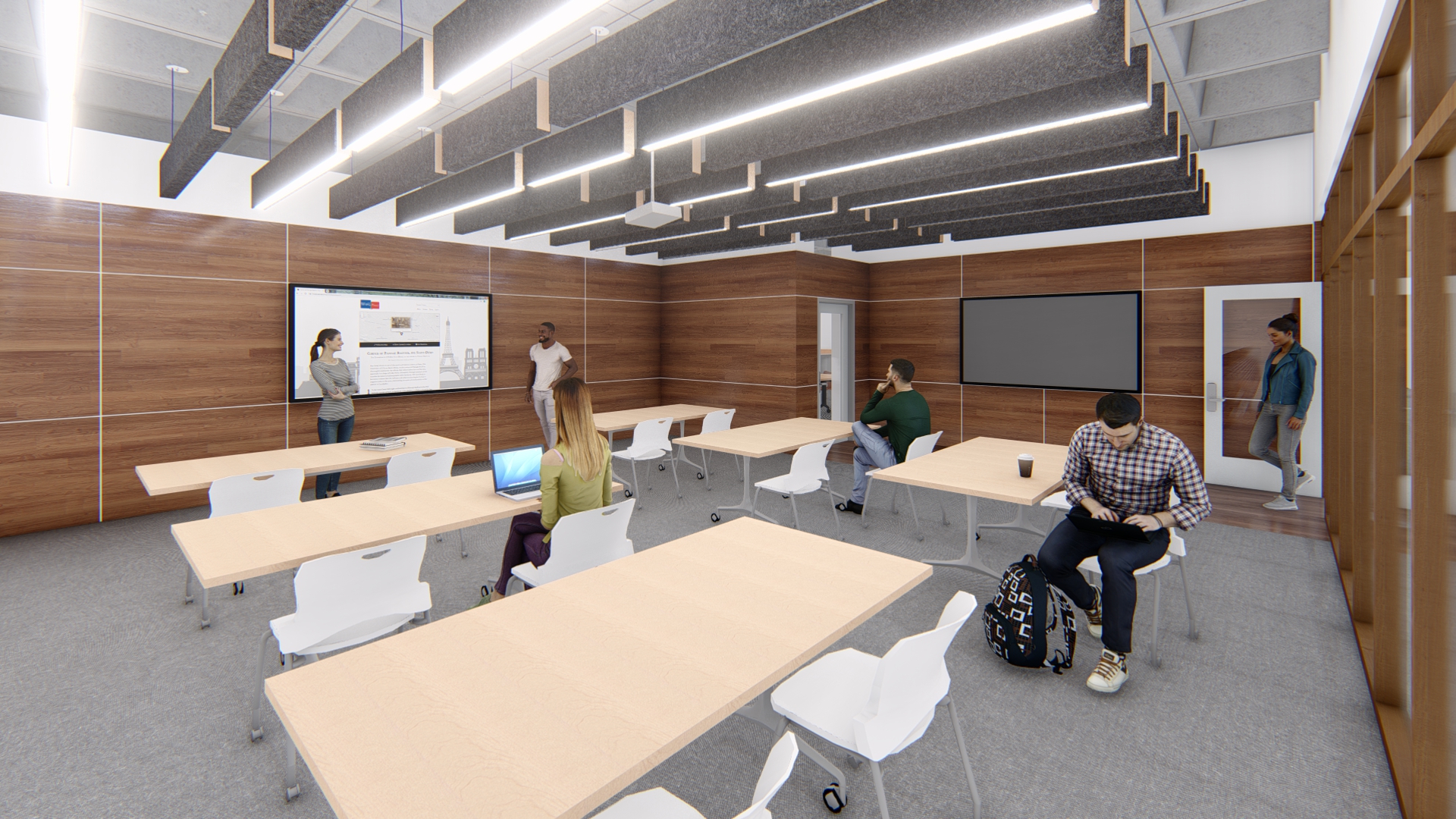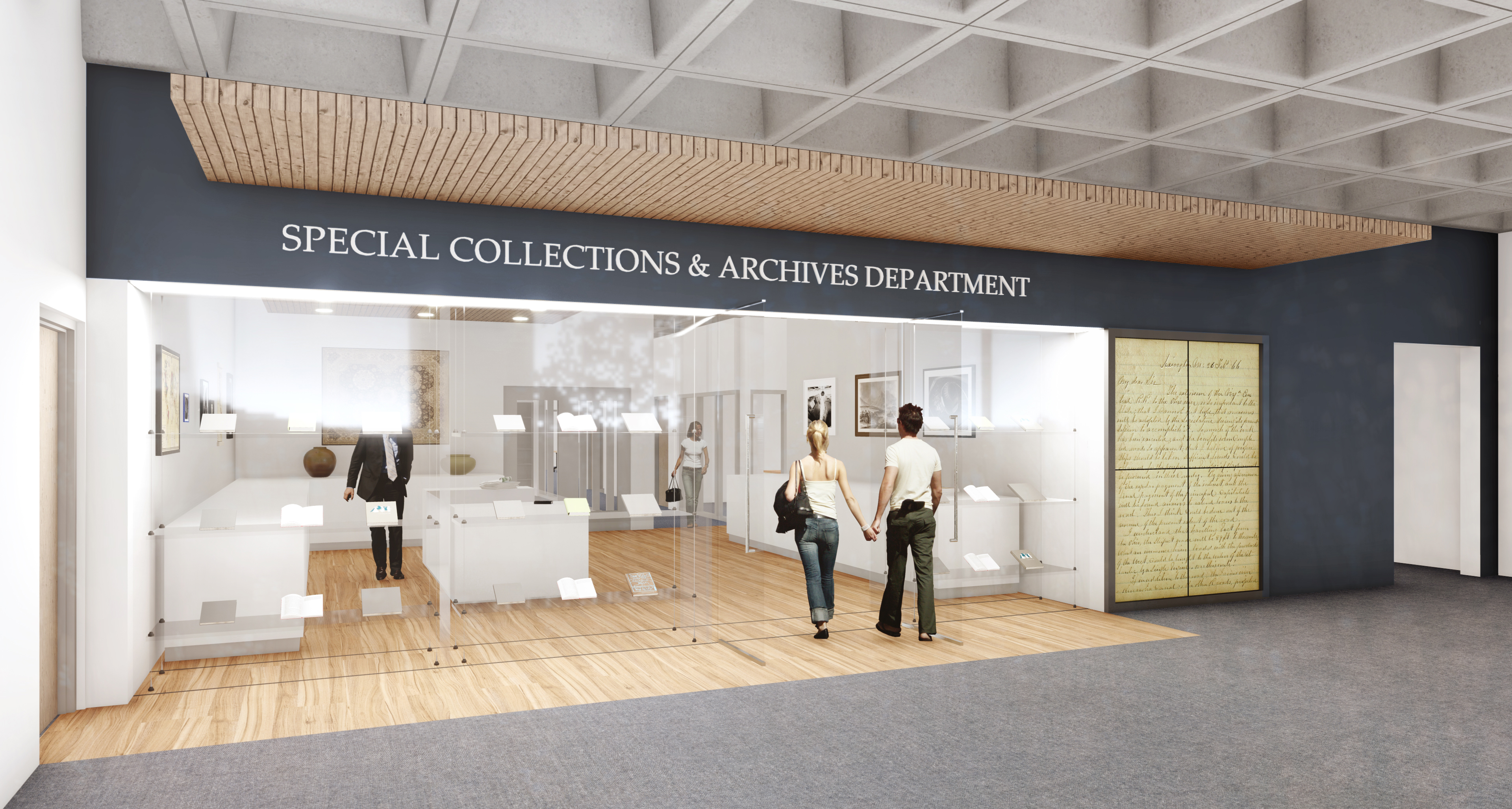Occasionally, we find ourselves the beneficiaries of unexpected opportunities to expand our thinking about libraries – both in the ways they are originally conceived to operate and in the ways they adapt, grow, and change as the result of shifting patterns of use. Leyburn Library, the main center for scholarship and research on the campus of Washington and Lee University in Lexington, Virginia, is a great example of how we continue to grow our knowledge base about library design trends.
Our engagement at Washington and Lee began after a casual series of conversations with the director of the library and a surprise invitation to take a walking tour of the building with some of the staff that help operate it. We’d worked at W+L in the past (VMDO completed the Elrod Student Center, the library’s neighbor to the south, a few years prior) and as a result had a good familiarity with the campus plan, the University’s formidable academic aspirations, and the deep legacy of the institution.

What we hadn’t appreciated was the pressing need for new and expanded learning, teaching and research spaces across campus and, especially, within the library. Sasaki Associates had recently been engaged to do a comprehensive campus master plan, within which improvements to the library were prioritized. Signaling forthcoming changes, the master plan effort created ideal conditions for us to question what an academic library at Washington and Lee should look like in the 21st century.
As our informal conversations with the library director and his staff advanced through 2019, we progressed from early discussions about constraints and limitations (architectural, financial, historical) and found ourselves instead focusing mostly on Leyburn’s program. As we’d long known, W+L is home to a robust archive of historical artifacts and resources and one of the strongest Special Collections departments in the region. It became clear that one way to enhance the library experience and to expand the library’s impact in the community would be to showcase the University’s prolific collection of historical acquisitions in a space commensurate with its holdings.

Leyburn Library’s current archives and special collections department is housed on the floor below the building’s main entry and its popular learning commons. The special collection’s reading room is a crown jewel but suffers from poor visibility and limited square footage. As VMDO began suggesting ideas about possible improvements, we began to speculate about the possibilities of a new, flexible gallery and teaching space that would activate the public-facing portions of special collections and help draw new patrons to the facility.
We also posited that a dedicated special collections classroom would help boost the visibility of the department’s many fine acquisitions and create a common space for scholars and students to collaborate in a secure space. Ultimately, these proposals garnered considerable support from the director of the library and his staff, and VMDO enthusiastically agreed to test design options that could be used for future fundraising efforts.
We are hopeful that part of the answer about Leyburn’s future lay in the riches of its past.


